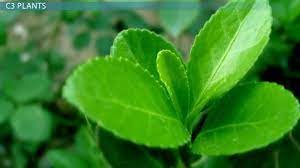In C3 Plants: How the Conservation of Water Promotes
Introduction
Ever felt thirsty on a hot day and wished for a cool glass of water? Just like us, plants need water too. But did you know that some plants have clever mechanisms to save water, especially during times of scarcity? Enter C3 plants, nature’s efficient water savers. Let’s dive deep into the world of C3 plants and see how they champion the art of water conservation.
What are C3 Plants?
C3 plants are the most common type of photosynthesizing plants on earth. Their name stems from the fact that the first organic compound produced during photosynthesis in these plants is a 3-carbon molecule. Examples include wheat, rice, and many types of wild plants.
The Significance of Water Conservation in C3 Plants
Photosynthesis Basics
Remember those science classes where you learned about photosynthesis? Plants need sunlight, CO2, and water to create glucose, which is their food. The sun is plentiful, and CO2 is present in the air, but water? That can be a scarce resource, especially in drought-prone areas.
The Role of Stomata
Imagine your skin having tiny pores that open and close based on the weather. Plants have these too, called stomata. Through these stomata, plants take in CO2 for photosynthesis. But here’s the catch: when they open up to take in CO2, they lose water.
Water Conservation Mechanisms
How C3 Plants Save Water
C3 plants have evolved to be efficient in their water usage. One way they do this is by closing their stomata during the hottest parts of the day, reducing water loss through transpiration. Smart, isn’t it?
Benefits of Water Conservation for C3 Plants
Improved Efficiency
By conserving water, C3 plants can continue photosynthesis even during stressful conditions, ensuring they always have enough food.
Drought Resistance
Water conservation provides C3 plants with a higher tolerance to drought. When other plants are wilting, our C3 heroes stand tall.
Growth and Reproduction Advantages
When a plant doesn’t have to constantly worry about its next water source, it can focus more on growth and reproduction. More water savings equals more chances for survival.
Comparing C3 with C4 and CAM Plants
Differences in Photosynthesis Processes
While C3 plants use the Calvin cycle for carbon fixation, C4 and CAM plants have additional pathways, making them even more efficient in hot, arid environments.
Adaptations for Different Environments
While C3 plants are champions in cooler climates with moderate sunlight, C4 plants thrive in hot, sunny environments and CAM plants dominate in desert regions.
Conclusion
Water conservation in C3 plants is more than just a survival strategy; it’s an evolutionary marvel. In a world where resources can be scarce, nature has designed these plants to optimize their use, ensuring growth, reproduction, and, ultimately, survival.
Frequently Asked Questions
- What are some examples of C3 plants?
- Common examples include wheat, rice, and barley.
- How do C3 plants differ from C4 and CAM plants?
- The main difference lies in their photosynthesis processes. C3 plants use the Calvin cycle, while C4 and CAM plants have additional pathways.
- Why is water conservation important for plants?
- Water conservation ensures that plants can continue photosynthesis even under stressful conditions, thus ensuring they have adequate food.
- How do stomata contribute to water loss in plants?
- Stomata, when open for CO2 intake, also allow water vapor to escape, leading to water loss.
- Are C3 plants better than C4 or CAM plants?
- It’s not about being better; each type of plant is adapted to thrive in its specific environment.


